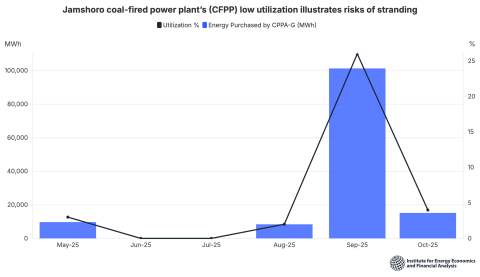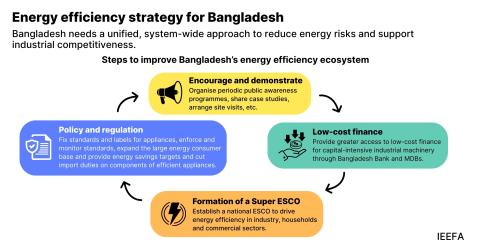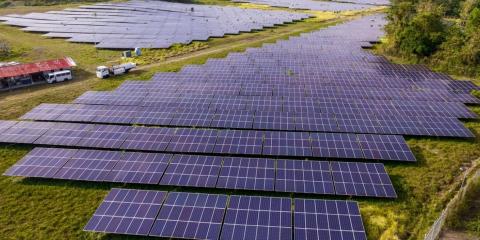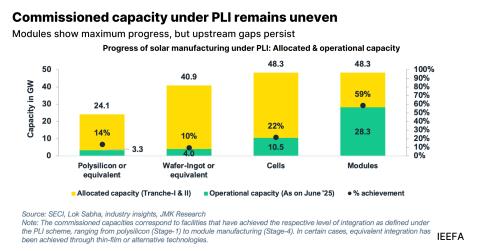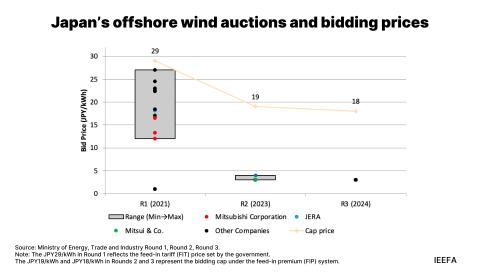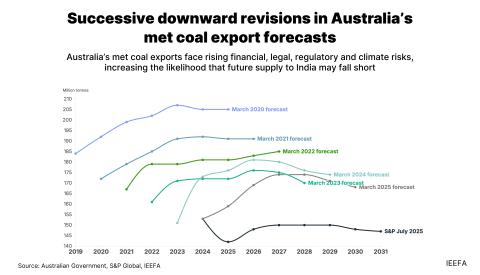Transition credits: A potential financial enabler for the coal-to-clean switch
Download Full Report
View Press Release

Key Findings
Transition credits, a proposed new category of carbon credits, aim to monetize the emissions avoided through early coal-fired power plant (CFPP) closures and their replacement with clean energy.
Closing a profitable CFPP poses an economic challenge, as early closure usually lowers the net present value (NPV) of the plant’s future cash flows. Early shutdown requires compensation up to the NPV of foregone cash, and replacing its capacity with renewables can add further investment costs.
The early shutdown of fossil fuel projects presents substantial economic hurdles and extensive financing requirements. The loss of a plant shutdown is estimated to range from USD11-52 per metric tonne of carbon dioxide equivalent (MTCO2e) avoided, suggesting transition credits could bridge this fiscal deficit.
Transition credits face valuation and replicability challenges, with pricing varying by project and location. Social costs are difficult to allocate, and falling renewable energy costs raise additionality concerns. Despite these challenges, transition credits could establish realistic carbon price benchmarks and stimulate Asian market development.
Executive Summary
The Asia-Pacific region remains dependent on coal as the primary source for electricity generation despite the rising penetration and falling costs of clean, renewable energy. An important reason for the slow transition to clean energy lies in the region’s large number of young power plants (operational for less than 15 years). Retiring these profitable power plants early requires compensating owners and operators for foregone earnings. These compensation costs have proven challenging to finance, contributing to delays in the energy transition.
Transition credits are proposed financial instruments aimed at placing a monetary value on emissions avoided through the early closure of coal-fired power plants (CFPPs). The credits could then help finance the shutdown. The concept seeks to bridge the economic gap in accelerating the phase-out of coal power by creating a new category of carbon credits.
Transition credits have the potential to play a key role in developing regional carbon markets by pricing carbon emissions based on costs. They can also bring transparency to emissions pricing as the value would be directly derived from emissions avoided. A credible transition credit instrument could help mobilize finance aligned with avoided emissions and attract a broader range of financial market participants — whether through carbon credit portfolios, impact investing programs, or blended finance structures.
However, transition credits are likely to remain case-specific since the carbon abatement calculation will differ from project to project based on factors such as plant age, efficiency, and historical carbon emission record. Also expected are significant cost variations based on each plant’s specific financial structure, cost of capital, and power purchase agreement (PPA) flexibility, among others.
Initial estimates from various early models suggest a wide range in potential transition credit pricing, from USD11-12 to USD52 per metric tonne of carbon dioxide equivalent (MTCO2e). Given the variation in potential valuations at the time of issuance, transition credits may initially serve only as niche financing instruments, albeit high-quality ones, if designed well. Alternatively, if proven viable, transition credits could be scaled up through national-level implementation, unlocking economies of scale.
The transition credit concept faces several challenges that must be addressed to build credibility and encourage widespread adoption. Apart from the replicability and pricing difficulties, the social and "just transition" costs can also be complicated to estimate and allocate to specific units. Another potential hurdle lies in the declining costs of renewable energy, which may raise questions about the additionality of transition credits — particularly if renewables are already cost-competitive. However, the slow pace of the energy transition in many Asian countries, despite declining renewable costs, suggests that innovative instruments like transition credits could still play a critical role. In particular, they may offer valuable financing solutions in parts of Asia where significant disparities exist between newer and older plants’ generation costs.
Like other forms of carbon offsets, transition credits face the challenge of accurately estimating the quantity of carbon avoidance. Several organizations are currently developing methodologies to support these calculations. However, the risk of system misuse cannot be eliminated. Similarly, another concern is ensuring that the coal left unused (avoided carbon emissions) is not extracted and repurposed for future power generation or other uses. To address this, it may be necessary for the national authority in the country where the plant or mine is located to provide such a guarantee.
Multiple approaches are likely to be needed to accelerate power system decarbonization in many Asian countries and to reduce future emissions from younger coal plants. Despite the many challenges, transition credits can unlock new pathways for financing coal plant decarbonization. They could also be instrumental in setting more realistic benchmarks for carbon prices in Asia, helping to spur market development, particularly in countries where carbon pricing is either absent or insufficient to drive a meaningful shift from coal to clean energy.





